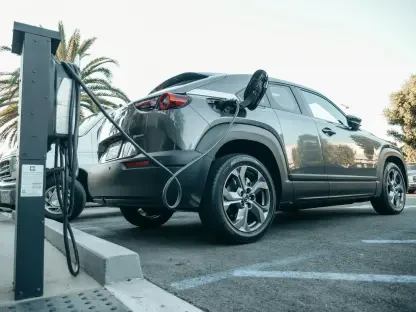I’m thrilled to sit down with Camille Faivre, a renowned expert in education management who has been at the forefront of shaping higher education policies, particularly in the realm of scientific research funding. With her extensive experience supporting institutions in developing open and e-learning programs in the post-pandemic era, Camille brings a unique perspective on how recent policy changes, like the executive order on federal research grants signed on August 7th, impact the academic and scientific communities. In our conversation, we delve into the implications of this order on research innovation, the potential politicization of funding decisions, and the broader effects on the future of science in the United States.
Can you walk us through the key aspects of the recent executive order on federal research grants and what it means for how funding decisions are made?
Certainly. The executive order, signed on August 7th, shifts significant oversight of federal research grants to political appointees within federal agencies. These appointees are now tasked with ensuring that grants align with the administration’s priorities and what’s termed as the “national interest.” This is a notable change from the past, where career experts and peer review processes primarily guided funding decisions. The order also explicitly aims to prevent funding for certain types of projects—those that, for example, recognize gender beyond a binary framework or are perceived to promote “anti-American values,” though that term remains vaguely defined. This marks a departure from a system that prioritized scientific merit over political alignment.
How do you see this shift in oversight affecting the landscape of scientific innovation in the U.S.?
I’m deeply concerned that this shift could stifle creativity and curiosity, which are the bedrock of scientific progress. When political appointees, rather than scientists, hold the reins on funding, there’s a risk that research will be judged not on its potential for discovery but on whether it fits a specific ideological mold. This could discourage scientists from pursuing bold, unconventional ideas or even entering the field altogether. Over time, we might see a brain drain, with talent moving to countries where research is less constrained by political agendas. The U.S. has long been a global leader in science, and undermining that position could have lasting economic and societal consequences.
The order emphasizes aligning grants with ‘national interest.’ How do you interpret this in the context of research funding, and what might be the practical implications?
Interpreting ‘national interest’ is tricky because it’s inherently subjective and can shift with each administration. In practice, it likely means that research areas deemed politically favorable will get priority, while others—potentially critical fields like climate change or social equity initiatives—might be sidelined or defunded. This could narrow the scope of inquiry, limiting the kinds of questions scientists feel safe to explore. When funding is tied to political priorities, it risks turning science into a tool for policy rather than a pursuit of truth, which is a dangerous precedent.
Looking back at history, how does this policy compare to previous approaches to research funding in the U.S.?
Historically, the U.S. has thrived on a model that largely insulated science from political interference, especially post-World War II under Vannevar Bush’s vision. His strategy emphasized funding research based on scientific merit, with the government providing resources but deferring to the scientific community on project selection. This approach fueled incredible advancements in medicine, technology, and more, positioning the U.S. as a global leader. In contrast, there have been moments—like during the Vietnam War—where funding was redirected to align with immediate military needs, leading to significant setbacks. Many scientists left the field due to job scarcity, and recovery took years. The current order echoes those restrictive policies, but with an even broader ideological overlay, which could amplify the damage.
There’s concern that this policy might drive scientists out of the U.S. or out of research entirely. What are your thoughts on this potential exodus and its impact?
I think this concern is very real. Scientists already face a challenging job market, and with funding uncertainty or sudden grant terminations, many may struggle to sustain their careers here. Countries in the European Union and China are actively recruiting American talent, offering more stable environments for research. Losing these minds would be a blow to U.S. innovation—think of the breakthroughs in biotech or IT that might never happen. Beyond that, it sends a discouraging message to the next generation. Young people watching this unfold might opt for more secure or lucrative fields, and we could lose the future innovators who would have driven progress.
How do you think universities and research institutions can navigate the uncertainties introduced by this executive order?
Universities are in a tough spot. They’ll need to build uncertainty into their planning, prioritizing projects that seem more likely to align with the administration’s goals while seeking alternative funding sources—private foundations, industry partnerships, or international collaborations. Diversifying funding is key to maintaining some autonomy. Additionally, clear communication with federal agencies will be crucial to understand shifting priorities. Some might also focus on simplifying grant applications, as the order suggests, to make the process more accessible, though that’s a small silver lining amidst broader challenges.
What is your forecast for the future of scientific research in the U.S. under policies like this one?
I’m cautiously pessimistic. If policies continue to prioritize political alignment over scientific merit, we risk a significant decline in the quality and scope of research. The U.S. could cede its position as a leader in global science, with long-term effects on everything from healthcare to technology. However, the scientific community is resilient. If universities, researchers, and advocates push back through collaboration and alternative funding, there’s a chance to mitigate some damage. But it will require a concerted effort to protect the integrity of science from becoming a political pawn. I hope we see a return to valuing curiosity-driven research, but the road ahead looks challenging.









